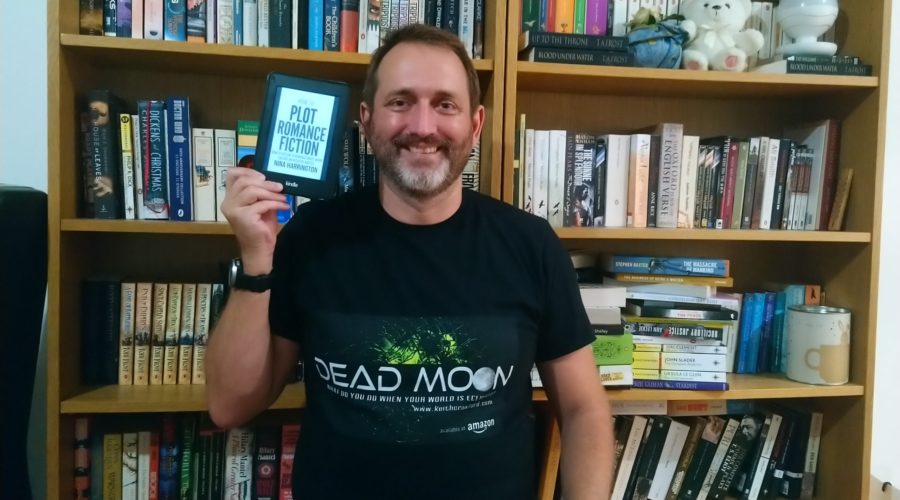Link :Amazon, Goodreads. Price: £4.99
This book is aimed at intuitive writers, or “pantsers”, who don’t know anything about story structure and find themselves getting lost part way through a project. By learning a little about structure, the author says they can help you become more productive and prolific than ever before by finding a middle way between “meticulous story plotting and full on organic writing.”
Before I get started with this critique: Harrington’s “secret” to plotting romance fiction is extremely valuable, changed the way I write my own novels, and is useful to writers in any genre. There were some things I didn’t like so much, but they were MUCH less important that the bottom line: this book is really useful.
The secret, Harrington argues, is the “Emotional Story Structure.” This for the most part is another regurgitation of Aristotle’s poetics, but the emphasis on the importance of romance being character driven is useful to anyone in any genre. If you’re a plotter then it’s easy to get wrapped up in where you want the story to go and forget your characters have to get your there.
There’s a chunk of pseudo-neuroscience intended to debunk some older pseudo-neuroscience (honestly, anybody who isn’t a neurologist should just stay away from this discipline until it’s had 50 years to get over Bennet and Miller’s IgNoble for “Study on a Dead Fish’s Thoughts”). Harrington is a scientist herself, so there are references and some decent reading, but really it serves to do nothing more than make her system sound like it is based on neuroscience. Which it isn’t, really, nor does it have to be: the six steps she lays out are useful and her credentials as an author sufficient.
The pseudo-science is, however, use to make an important point: you don’t have to have a particular sort of brain to use planning techniques: focus on theme to build your character’ emotional journey, because that is the story, and the plot is just a mechanism for its delivery. Finally, and most valuably, she introduces the concept of the character’s “wound” – something from their youth that has damaged their world view and must be fixed before they can have a happy ending. The plot is how they pay a price to heal their wound and become a better person.
So, despite my snarky remarks about neuroscience, this is both a solid book on story structure and one that contains valuable insights put in a way that I hadn’t come across before that directly improved my own writing. Pick up a copy if you want to know how to put your characters in the driver’s seat (and for a decent model for structuring story to boot.) Highly recommended.



